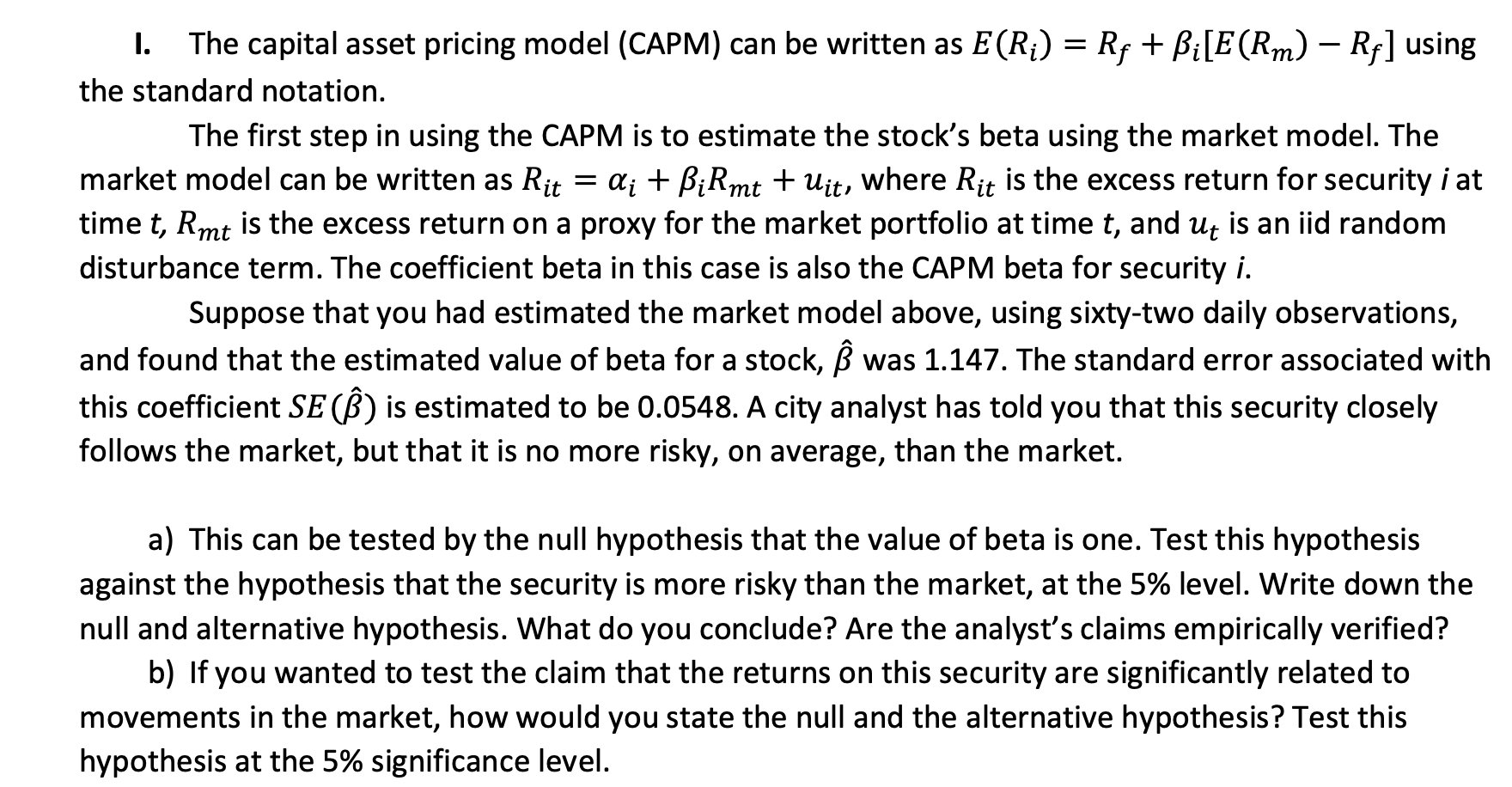
1. The capital asset pricing model (CAPM) can be written as E(Ri) = Rp + Bi[E(Rm) Rf] using the standard notation. The first step in using the CAPM is to estimate the stock's beta using the market model. The market model can be written as Rit = di + BiRmt + Uit, where Rit is the excess return for security i at time t, Rmt is the excess return on a proxy for the market portfolio at time t, and Ut is an iid random disturbance term. The coefficient beta in this case is also the CAPM beta for security i. Suppose that you had estimated the market model above, using sixty-two daily observations, and found that the estimated value of beta for a stock, was 1.147. The standard error associated with this coefficient SE() is estimated to be 0.0548. A city analyst has told you that this security closely follows the market, but that it is no more risky, on average, than the market. a) This can be tested by the null hypothesis that the value of beta is one. Test this hypothesis against the hypothesis that the security is more risky than the market, at the 5% level. Write down the null and alternative hypothesis. What do you conclude? Are the analyst's claims empirically verified? b) If you wanted to test the claim that the returns on this security are significantly related to movements in the market, how would you state the null and the alternative hypothesis? Test this hypothesis at the 5% significance level. 1. The capital asset pricing model (CAPM) can be written as E(Ri) = Rp + Bi[E(Rm) Rf] using the standard notation. The first step in using the CAPM is to estimate the stock's beta using the market model. The market model can be written as Rit = di + BiRmt + Uit, where Rit is the excess return for security i at time t, Rmt is the excess return on a proxy for the market portfolio at time t, and Ut is an iid random disturbance term. The coefficient beta in this case is also the CAPM beta for security i. Suppose that you had estimated the market model above, using sixty-two daily observations, and found that the estimated value of beta for a stock, was 1.147. The standard error associated with this coefficient SE() is estimated to be 0.0548. A city analyst has told you that this security closely follows the market, but that it is no more risky, on average, than the market. a) This can be tested by the null hypothesis that the value of beta is one. Test this hypothesis against the hypothesis that the security is more risky than the market, at the 5% level. Write down the null and alternative hypothesis. What do you conclude? Are the analyst's claims empirically verified? b) If you wanted to test the claim that the returns on this security are significantly related to movements in the market, how would you state the null and the alternative hypothesis? Test this hypothesis at the 5% significance level







